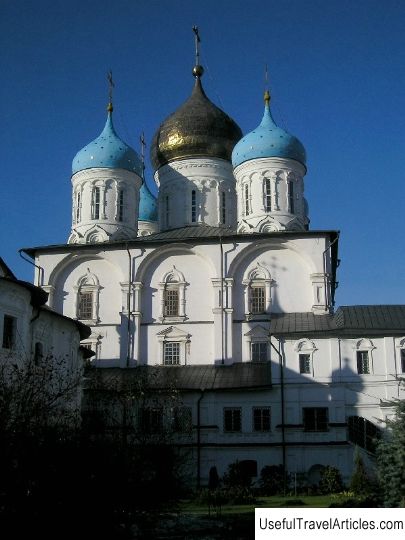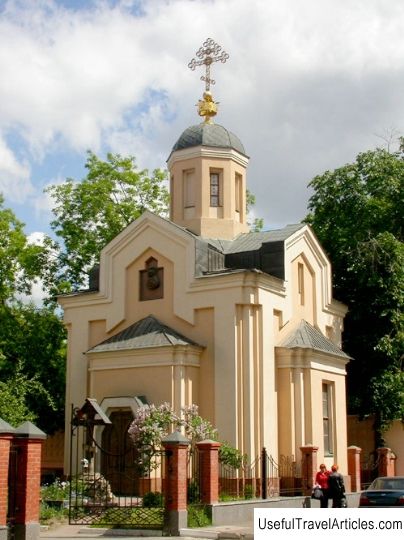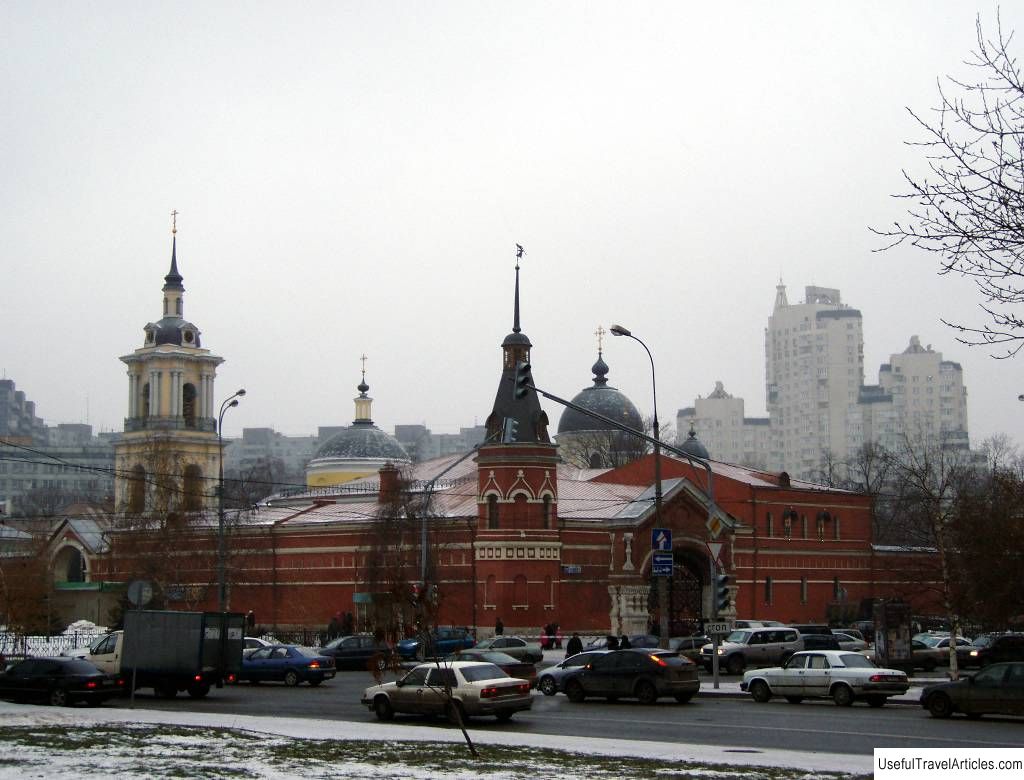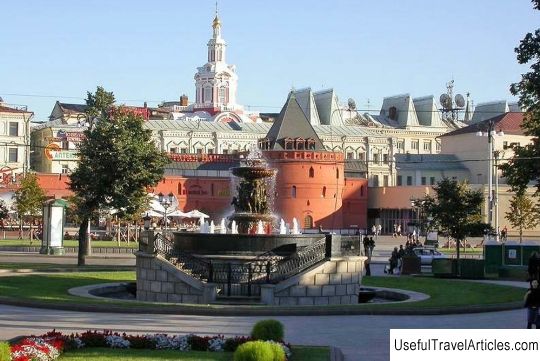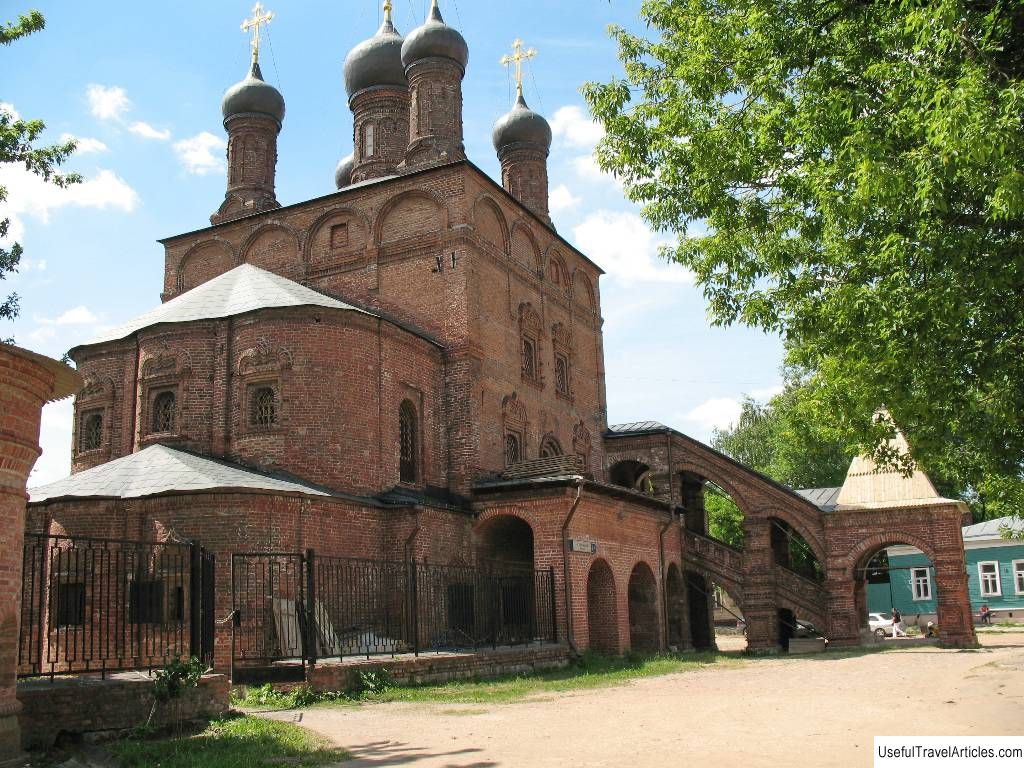Novospassky monastery description and photos - Russia - Moscow: Moscow
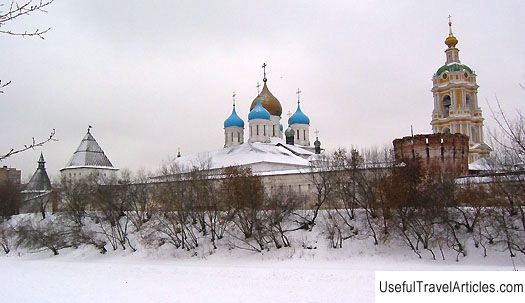
Novospassky monastery description and photos - Russia - Moscow: Moscow. Detailed information about the attraction. Description, photos and a map showing the nearest significant objects. Photo and descriptionThe bell tower that soars into the sky on Krutitsky Hill near the Moskva River belongs to the Transfiguration Cathedral of the Novospassky Monastery. An Orthodox male monastery has the status of stauropegic , which means autonomy from the local diocesan authority and submission only to the patriarch. Stavropegia is the highest status in the Orthodox Church. The meaning of this word, translated from Greek, means "raising the cross", which in former times in the cathedrals of stauropegic monasteries was done with the direct participation of the patriarch. The high status of the Novospassky monastery emphasizes its close connection with the Romanov boyar family, who at the beginning of the 17th century entered the royal throne in Russia. History of the Novospassky monasteryThe monastery in honor of the Savior first appeared in Moscow in the 13th century. Prince Daniel of Moscow , the son of Alexander Nevsky, founded the monastery, now called the Danilov Monastery. A few decades later, Daniel's son Ivan Kalita wished that the monastery existed next to his palace and ordered the monks to move to Borovitsky Hill. Soon the Cathedral of the Transfiguration of the Lord was built there, and a shelter for the poor was opened at the monastery. Savior on Bor was the place where the whole family of the Grand Duke prayed. During the reign of John III Moscow began to be built up with stone buildings. Foreign architects came to the city, and the wife of the prince Sophia Paleologue ordered the grand ducal palace. The monastery found itself surrounded by stone palace buildings and was clearly constrained in the new conditions. The Grand Duke decided to transfer the monastic brethren to the bank of the Moskva River in the Vasilievsky camp. This place was significant for Moscow: Vasily Temny twice stood here with an army against the Tatar invaders, and Vasilyevsky camp was considered a guard post on the outskirts of the capital. Since then the monastery has been called the New Spassky Monastery. The new monastery grew and developed gradually. In the 16th century he had to defend himself against the raids of the Tatars more than once, and the strong stone walls of the monastery served the defenders faithfully. At the beginning of the 17th century, the Novospassky Monastery was able to repel the siege of the Poles, who were trying to seize Moscow in difficult times of trouble. After the Romanovs' wedding to the kingdom in 1613 Novospassky monastery began to enjoy special royal favor. The monastery housed the tomb of the members of the Romanov family, and financial receipts from the treasury were more than generous. An era of prosperity has come for the monastery. First of all, Mikhail Fedorovich Romanov ordered to strengthen the monastery defenses. Towers with embrasures for artillery guns have grown at the gates. In 1640, the wooden walls began to be replaced with stone ones. Their height reached 7.5 meters, and their total length was 650 meters. Ammunition was stored in five towers at the corners of the perimeter, and along the dug underground passages it was possible to reach the river bank. In the same period, a bell tower and a stone church were erected on the territory of the monastery in honor of the Monk Sava the Sanctified. This is how the Patriarch Filaret , freed from Polish captivity, pays tribute to the memory of the saint. Around the walls of the monastery there are settlements of construction masters, which gave the names of the modern streets Bolshie and Malye Kamenshiki. The construction of the stone cathedral on the territory of the Novospassky monastery was completed in 1647. The temple was consecrated in honor of Savior of the Transfiguration . The simplicity and severity of the architectural forms of the white-stone cathedral were surprisingly harmoniously combined with the whimsical decoration and colorful details. The majestic building proudly towered on a high basement and looked completely in line with Orthodox traditions. The end of the first half of the 17th century is the time when Nikita Minin, known in the future as Patriarch Nikon , was the archimandrite of the Novospassky monastery. >. Reforms of the Russian Orthodox Church are associated with his name, which caused a split and the emergence of the Old Believers. At the head of the brethren of the Novospassky monastery, Nikita Minin was a member of a circle of clergy and secular persons who tried to revitalize religious life in the state and sought to improve the morality of both the population and those who had church orders. The future patriarch introduced the tradition of regular meetings with the tsar: he reported to him weekly and consulted with him on the affairs of the monastery. At the end of the 17th century, the monastery became one of the richest in Moscow, but the transfer of the capital to St. Petersburg dealt a serious blow to it. welfare. The monastery began to decline, suffered from fires, buildings were dilapidated. Under Catherine II there was a secularization of the property of the church, and the monastery, having lost its estates, lost all possibilities for existence. The French in 1812 destroyed many buildings and tried to blow up the cathedral, but, fortunately, they failed. A century later, the Novospassky monastery rises from the ashes and becomes the center of religious and moral enlightenment of the population, but the revolution that broke out again stops life in the monastery. In 1918, a concentration camp was opened in the monastery, where everyone who did not want to put up with the new government was tortured and executed. The churches house the archives of the NKVD, a potato storehouse, warehouses of confiscated property, a sobering-up station and other organizations needed by the communists. The monastery returned to the Russian Orthodox Church only in 1991 , and since then its revival began. 500 years after how the first stone was laid in the foundation of the Transfiguration Cathedral, prayer sounded in it again. Architectural ensemble All churches, buildings and structures of the Novospassky Monastery are of cultural and historical value. The first temple on the site of Transfiguration Cathedral was built at the end of the 15th century. In 1645, a new one was laid in its place and consecrated in 1647. In the cathedral, it is worth looking at the magnificent five-tiered iconostasis with ancient images. The walls and dome of the cathedral are decorated with frescoes dedicated to the earthly life of the Savior and great church holidays. The family tree of Russian princes and tsars is depicted on the vault next to the entrance. The common porch with the cathedral is the Church of the Intercession of the Blessed Virgin Mary , founded by Tsar Alexei Mikhailovich in 1673. In the Church of the Sign of the Mother of God there is a family tomb of the Sheremetev family. The temple was consecrated on the site of the former wooden one in 1795. The tallest structure on the territory of the monastery is the bell tower , built in 1759-1785 on the site of an old belfry of the early 17th century. The bell tower is just over 80 meters high, and in pre-revolutionary Moscow it was one of the most impressive structures that could be seen from many kilometers away. The author of the belfry project is the architect Ivan Zherebtsov. He is buried here, in the first tier of the bell tower. In the second tier - Church of St. Sergius of Radonezh , arranged in 1787 with private donations from the merchant widow Babkina. The temple was badly damaged during the Napoleonic invasion and was restored in 1916. From the temple there is an exit to the terrace on the second tier. A striking clock is installed at the top of the bell tower, which marks the time every 30 minutes. The base of the belfry serves as the entrance gate to the Novospassky monastery. During the tour you can visit the museum , which was opened in honor of the 20th anniversary of the revival of the Novospassky monastery. The history of the creation and revival of the monastery is presented on the museum stands. Part of the exposition is dedicated to Grand Duke Sergei Alexandrovich , who was buried in the tomb of the Romanovs. Shrines of the Novospasskaya monastery
The main shrine of the monastery until 1917 was The Miraculous Image of the Savior Not Made by Hands . The first miracle he showed happened in 1645 in a church in Vyatka, where the icon was then located. The blind man who saw his sight near the image became the first person whom the icon helped to heal from an illness, and since then the Miraculous Image of the Savior not made by hands has been beneficial to many believers. In 1647, the icon was transferred to Moscow, and the gates through which it entered the Kremlin have since been called Spassky. The image of the Savior took part in suppressing the uprising led by Stepan Razin. According to eyewitnesses, the icon helped to stop a massive fire in 1834 in Moscow and healed many suffering from the cholera epidemic of 1848. The miraculous image of the Savior not made by hands in a strange way irrevocably disappeared in 1917, although in this case there is no need to rely on God's providence. Today in the Novospassky monastery you can pray a list of the miraculous image, which, according to believers, has no less power than the original. Choir of the Novospassky monasteryAfter the monastery was returned The Russian Orthodox Church began its restoration in 1991, a choir was created at the monastery. Today it is called one of the best bands performing sacred music. Students and graduates of the Moscow Conservatory, the Academy of Choral Art and the Russian Academy of Music sing in the choir. The Monastic Choir is active in creative work - concert and tour. The choir's performances can be heard not only in the Novospassky Monastery, but also in the cathedrals of the Moscow Kremlin during the solemn services performed by His Holiness Patriarch of Moscow and All Russia. Notes
    We also recommend reading Church of Notre-Dame-de-Bon-Secours description and photo - Canada: Montreal Topic: Novospassky monastery description and photos - Russia - Moscow: Moscow. |

